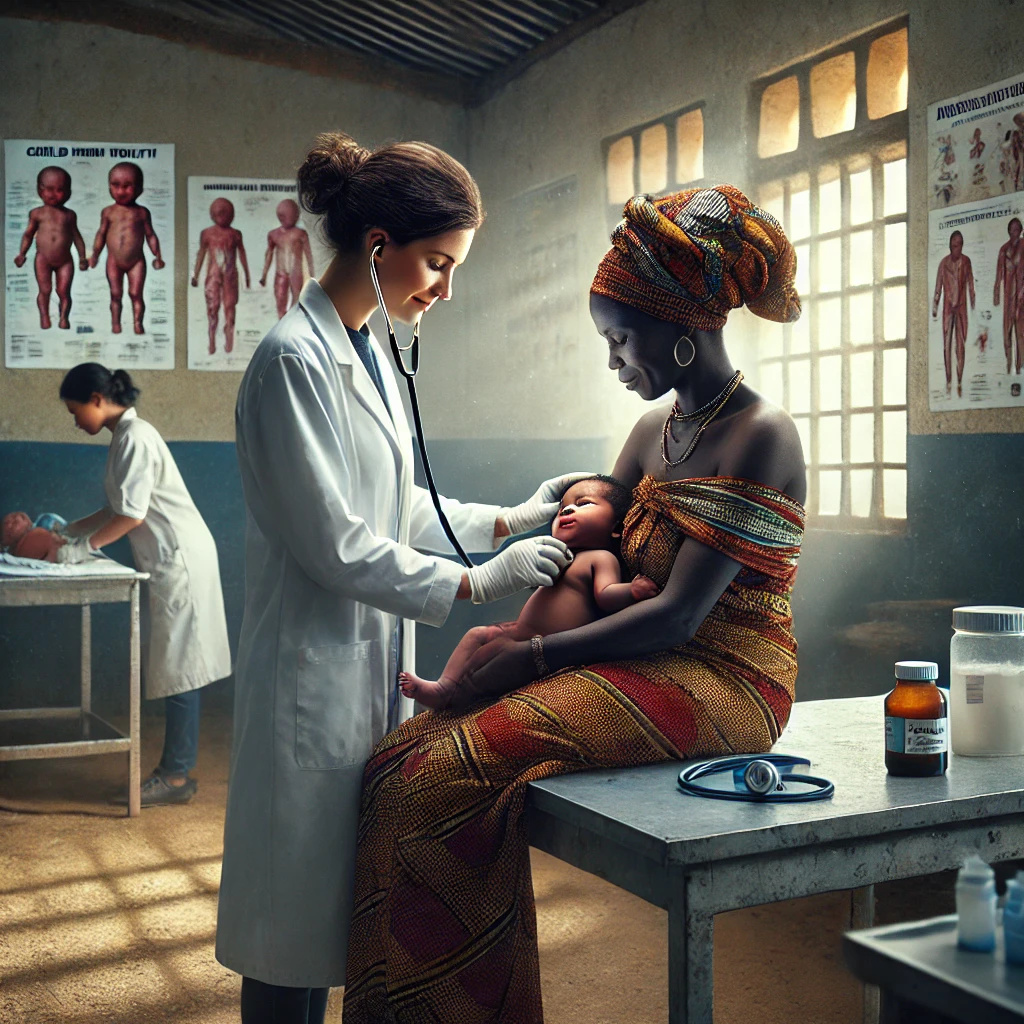Fragile Gains in Child Survival and Urgent Need for Renewed Investment: UN Reports
Global Child Mortality Falls to Historic Low in 2023, But Progress Stalls Amidst Funding Cuts and Widening Inequities.

The number of children dying before their fifth birthday globally dropped to a record low of 4.8 million in 2023, according to two new reports released today by the United Nations Inter-agency Group for Child Mortality Estimation (UN IGME). While this milestone reflects decades of global commitment to child survival, experts warn that these hard-fought gains are at risk due to stalled progress, widening disparities, and looming funding cuts.
In a parallel trend, stillbirths declined modestly but remained alarmingly high at around 1.9 million, underscoring the need for better maternal and newborn care. Since 2000, under-five deaths have decreased by more than half, and stillbirths have dropped by over a third, largely due to expanded access to vaccines, improved nutrition, safe water, and basic sanitation.
UNICEF Executive Director Catherine Russell emphasized that the progress made is both significant and fragile:
“Millions of children are alive today because of the global commitment to proven interventions. But without the right policy choices and adequate investment, we risk reversing these hard-earned gains.”
Slowdown in Progress: A Growing Concern
Despite improvements, the pace of progress has slowed dramatically since 2015. The annual reduction rate for under-five mortality dropped by 42%, and for stillbirths by 53%, compared to the 2000–2015 period. The slowdown predates the current funding crisis but has been exacerbated by significant global aid cuts in recent years.
Funding reductions are having a devastating impact, especially in regions already battling high child mortality and humanitarian emergencies. Health worker shortages, disrupted vaccine campaigns, clinic closures, and a lack of essential medicines such as malaria treatments are all threatening to undo progress.
According to Dr. Tedros Adhanom Ghebreyesus, Director-General of the World Health Organization (WHO):
“In the face of global funding cuts, there is a need more than ever to step up collaboration to protect and improve children’s health.”
Causes of Child Deaths and Stillbirths
Nearly half of all under-five deaths occur in the first month of life, driven mainly by premature birth, complications during delivery, and lack of immediate care. For children who survive the neonatal period, preventable infectious diseases—such as pneumonia, diarrhea, and malaria—remain the top killers.
Stillbirths, particularly late stillbirths (after 28 weeks), are most commonly caused by maternal infections, obstructed or prolonged labour, and inadequate medical intervention during childbirth. An estimated 45% of stillbirths happen during labour, a tragedy often linked to poor access to skilled birth attendants and emergency obstetric care.
Geographic Inequities: A Matter of Life and Death
The place of birth remains one of the biggest determinants of a child's chance of survival. A child born in a high-mortality country is 80 times more likely to die before the age of five than one born in the lowest-mortality country.
Children born in sub-Saharan Africa face the highest risk, with under-five mortality rates 18 times higher than those in Australia or New Zealand. Stillbirth risks also follow similar patterns, with nearly 80% of stillbirths occurring in sub-Saharan Africa and Southern Asia. Women in low-income countries are eight times more likely to experience a stillbirth compared to those in high-income countries.
Within nations, poverty, rural location, and maternal education levels continue to drive inequity. Children born to less-educated mothers in rural areas face substantially higher risks of death and stillbirth than their urban and more affluent counterparts.
What Needs to Be Done: A Roadmap Forward
The UN reports stress that progress is possible—even in low-resource settings—with the right investments and political will. Recommendations include:
-
Expanding access to quality maternal, newborn, and child health care, from pregnancy through early childhood.
-
Scaling up routine vaccinations, nutrition programs, and sanitation efforts.
-
Ensuring specialized care for preterm and sick newborns.
-
Investing in healthcare worker training, infrastructure, and community outreach.
-
Strengthening data systems to monitor mortality trends and reach vulnerable populations.
According to Juan Pablo Uribe, World Bank Global Director for Health:
“Investing in children's health ensures their survival, education, and future contributions to the workforce. With strategic investments and strong political will, we can continue to reduce child mortality.”
A Call to Action: Protecting the Most Vulnerable
As countries face economic headwinds and donors reassess global aid strategies, the UN IGME and its partners are urging governments, NGOs, and the private sector to prioritize child health and survival. The call is clear: Don’t let funding cuts undo decades of progress.
Li Junhua, Under-Secretary-General of the UN Department of Economic and Social Affairs (UN DESA), said:
“Reducing child mortality disparities is not just a moral imperative but a fundamental step towards sustainable development and global equity. Every child deserves a fair chance at life.”
The reports conclude with a strong appeal to the global community: to preserve and build upon the progress made, bold investments and coordinated action are essential. If the world is to achieve the Sustainable Development Goal of ending preventable child deaths by 2030, time is running out—and the cost of inaction is measured in millions of young lives.










